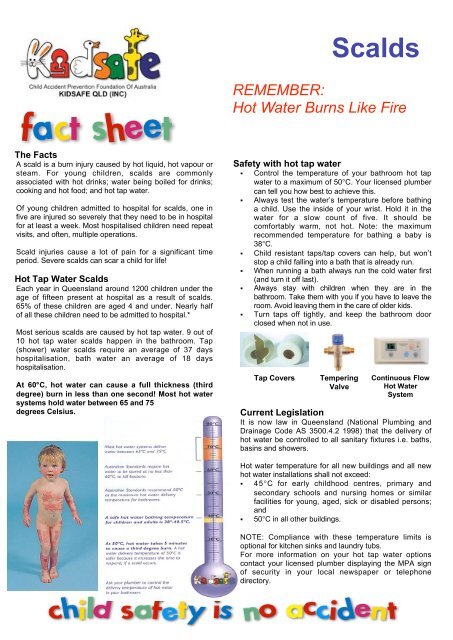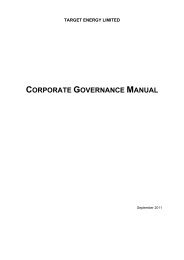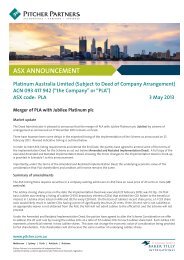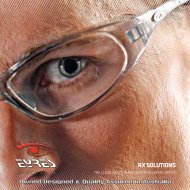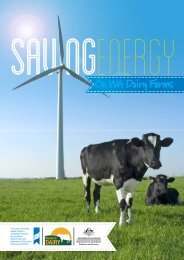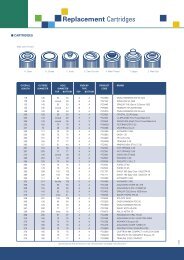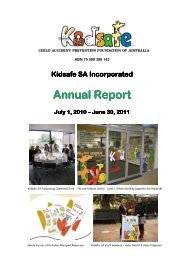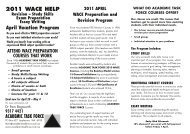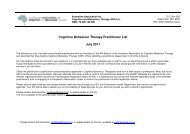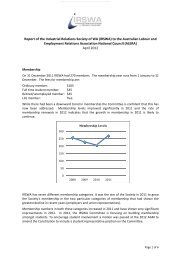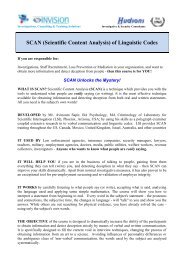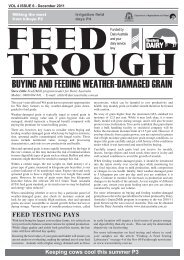Scalds
Scalds
Scalds
Create successful ePaper yourself
Turn your PDF publications into a flip-book with our unique Google optimized e-Paper software.
<strong>Scalds</strong><br />
REMEMBER:<br />
Hot Water Burns Like Fire<br />
The Facts<br />
A scald is a burn injury caused by hot liquid, hot vapour or<br />
steam. For young children, scalds are commonly<br />
associated with hot drinks; water being boiled for drinks;<br />
cooking and hot food; and hot tap water.<br />
Of young children admitted to hospital for scalds, one in<br />
five are injured so severely that they need to be in hospital<br />
for at least a week. Most hospitalised children need repeat<br />
visits, and often, multiple operations.<br />
Scald injuries cause a lot of pain for a significant time<br />
period. Severe scalds can scar a child for life!<br />
Hot Tap Water <strong>Scalds</strong><br />
Each year in Queensland around 1200 children under the<br />
age of fifteen present at hospital as a result of scalds.<br />
65% of these children are aged 4 and under. Nearly half<br />
of all these children need to be admitted to hospital.*<br />
Most serious scalds are caused by hot tap water. 9 out of<br />
10 hot tap water scalds happen in the bathroom. Tap<br />
(shower) water scalds require an average of 37 days<br />
hospitalisation, bath water an average of 18 days<br />
hospitalisation.<br />
At 60°C, hot water can cause a full thickness (third<br />
degree) burn in less than one second! Most hot water<br />
systems hold water between 65 and 75<br />
degrees Celsius.<br />
Safety with hot tap water<br />
Control the temperature of your bathroom hot tap<br />
water to a maximum of 50°C. Your licensed plumber<br />
<br />
<br />
<br />
<br />
<br />
can tell you how best to achieve this.<br />
Always test the water’s temperature before bathing<br />
a child. Use the inside of your wrist. Hold it in the<br />
water for a slow count of five. It should be<br />
comfortably warm, not hot. Note: the maximum<br />
recommended temperature for bathing a baby is<br />
38°C.<br />
Child resistant taps/tap covers can help, but won’t<br />
stop a child falling into a bath that is already run.<br />
When running a bath always run the cold water first<br />
(and turn it off last).<br />
Always stay with children when they are in the<br />
bathroom. Take them with you if you have to leave the<br />
room. Avoid leaving them in the care of older kids.<br />
Turn taps off tightly, and keep the bathroom door<br />
closed when not in use.<br />
Tap Covers<br />
Tempering<br />
Valve<br />
Continuous Flow<br />
Hot Water<br />
System<br />
Current Legislation<br />
It is now law in Queensland (National Plumbing and<br />
Drainage Code AS 3500.4.2 1998) that the delivery of<br />
hot water be controlled to all sanitary fixtures i.e. baths,<br />
basins and showers.<br />
Hot water temperature for all new buildings and all new<br />
hot water installations shall not exceed:<br />
45°C for early childhood centres, primary and<br />
secondary schools and nursing homes or similar<br />
facilities for young, aged, sick or disabled persons;<br />
and<br />
50°C in all other buildings.<br />
NOTE: Compliance with these temperature limits is<br />
optional for kitchen sinks and laundry tubs.<br />
For more information on your hot tap water options<br />
contact your licensed plumber displaying the MPA sign<br />
of security in your local newspaper or telephone<br />
directory.
Hot Food and Drink <strong>Scalds</strong><br />
Hot drink scalds usually involve a young child pulling a<br />
cup down on themselves; pulling down on an item (e.g. a<br />
tablecloth) that causes a drink to fall; or running into/being<br />
held by someone who has a drink and spills it. Children<br />
aged one to two years are most likely to be scalded in this<br />
way.<br />
Injuries are usually to the head, face, chest and hands.<br />
Hot drink scalds can happen quickly, often with adults<br />
nearby who do not realise a child is reaching for the hot<br />
drink until it is too late to stop them.<br />
To a small child the home is full of exciting things to touch,<br />
grab and climb. Children may grab hot cups, kettles, pots,<br />
pans and taps. They do not know that hot water burns like<br />
fire and can scar for life.<br />
You can stop your child from being scalded by watching<br />
them and by making some simple changes in the home.<br />
Kettles<br />
Keep kettles, jugs, teapots, coffee plungers and<br />
cords away from the edge of the bench.<br />
Use a cordless kettle.<br />
Buy a curly electric cord or tie your kettle cord out of<br />
reach of children.<br />
Hot Drinks<br />
Put hot drinks in the centre of the dinner table or<br />
somewhere else out of reach.<br />
Use non-slip place mats instead of table cloths<br />
Give toddlers their own special mug so they do not<br />
drink from yours<br />
Use broad-based commuter mugs with a lid<br />
Put your child down before having a hot drink<br />
Pots and Pans<br />
Keep young children out of the kitchen while cooking<br />
Fit a gate across your kitchen doorway<br />
Place children in a playpen<br />
Put your child down before using hot pots, pans and<br />
kettles<br />
Place microwaves at a safe height. The user’s face<br />
should be higher than the door.<br />
Fit a stove guard around your stove top.<br />
Use back hot plates before the front ones.<br />
Turn pot handles away from the front of the stove or<br />
bench.<br />
<strong>Scalds</strong> Facts<br />
Hot water can scald for up to 30 minutes after it<br />
is boiled. A fresh, piping hot drink can scald in a<br />
second.<br />
A cup of hot liquid spilled over a baby or toddler<br />
is equivalent to a bucket of hot water being<br />
spilled over an adult.<br />
First Aid for <strong>Scalds</strong><br />
1. Remove wet clothes. This helps the heat to escape<br />
from the skin. Leave clothing on if stuck to the skin<br />
2. Immediately apply lots of cool water to the scald<br />
for 20 minutes. Do not use ice or ice water: it will<br />
damage the skin<br />
3. Keep the child warm. This will help to prevent the<br />
child from going into shock.<br />
4. See a doctor if the scald is:<br />
On the face, hands, feet, genitals or buttocks<br />
Larger than a 20c coin or blistered<br />
In an emergency phone 000 for an ambulance<br />
The Queensland Government has a brochure called Hot<br />
Water Burns Like Fire. To view, click on the following<br />
link:<br />
www.health.qld.gov.au/phs/documents/tphun/28207.pdf<br />
*Figures extrapolated from data provided by QISU 2006<br />
Information reproduced with permission of Kidsafe WA.<br />
Kidsafe QLD © 2006<br />
Excerpts may be copied for educational purposes. Written permission<br />
is required to copy this fact sheet in its entirety.<br />
For more information (07) 3854 1829<br />
Email: qld@kidsafe.org.au<br />
Website: www.kidsafeqld.com.au


